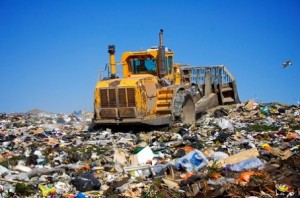Growing biofuel crops on landfill sites will soon be a reality as Waste Recycling Group (WRG) looks to generate renewable energy from former rubbish dumps.
The company has begun planting a combination of miscanthus grass and short rotation coppice (SRC) at 14 of its landfill sites across Lincolnshire, Nottinghamshire, Humberside and Yorkshire.
The grass and SRC have been introduced as biofuel crops over a total area of 100 hectares following a successful three-hectare feasibility project at the former Breighton landfill site, near Selby, East Riding of Yorkshire.
The project has attracted grant funding from Natural England and next year will see an additional 100 hectares planted at a mixture of operational and closed sites across the UK.
The plan is to sell the energy crops, once harvested, to Drax Power Station in Selby as a biomass fuel.
Miscanthus – or elephant grass – is a high-yielding energy crop that can grow up to 3m tall and produces a crop every year without the need for annual replanting.
Its rapid growth, low mineral content and high biomass yield make it an ideal biofuel. It thrives in poorer quality soils and provides excellent habitat for various forms of wildlife.
Harvesting will begin after the third year of planting and is expected to generate between 8-12 tonnes per hectare. The grass has a 30-year lifecycle and will be harvested annually.
WRG is believed to be the first waste management business of its kind to undertake an energy crop initiative of this scale.
[ad]
In addition to miscanthus, WRG also successfully harvested five hectares of SRC at its closed Burntstump Landfill, near Arnold in Nottinghamshire, in 2011 which will be the first biomass crop the company has marketed to Drax.
WRG’s senior restoration and energy crop manager, Mark Pailing, said: “This is a very exciting development for the company and builds on our track record of sustainable reclamation, recycling and regeneration.”
WRG is also hoping to expand its use of short rotation coppicing for leachate treatment at selected landfill sites in next few years.


